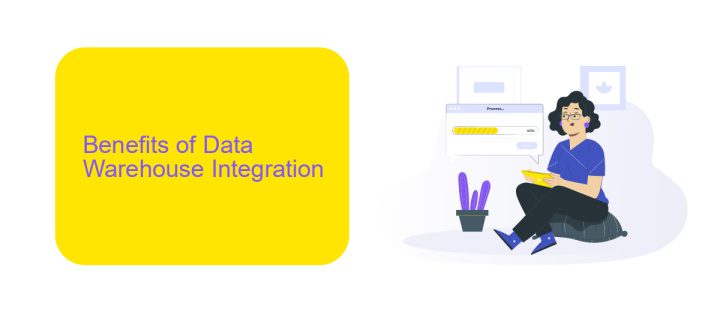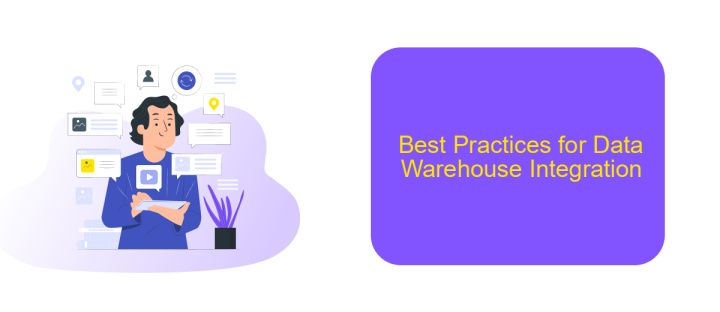Salesforce Data Warehouse Integration
Integrating Salesforce with a data warehouse can significantly enhance your organization's data management capabilities. By seamlessly merging CRM data with other business intelligence sources, you can gain comprehensive insights, streamline operations, and drive strategic decision-making. This article explores the key benefits, challenges, and best practices for achieving a successful Salesforce data warehouse integration.
Introduction
Integrating Salesforce with a data warehouse is essential for businesses aiming to streamline their data management processes and enhance their analytics capabilities. By consolidating data from various sources into a centralized repository, organizations can achieve a unified view of their operations, driving better decision-making and strategic planning.
- Enhanced data consistency and accuracy
- Improved data accessibility and reporting
- Streamlined data management processes
- Scalability to handle growing data volumes
One of the effective tools for setting up seamless integrations between Salesforce and data warehouses is ApiX-Drive. This service simplifies the process by providing an intuitive interface and pre-built connectors, enabling businesses to automate data transfers without the need for extensive coding. As a result, organizations can focus on leveraging their data insights rather than dealing with complex integration challenges.
Benefits of Data Warehouse Integration

Integrating Salesforce with a data warehouse offers numerous benefits that enhance data management and business intelligence. One of the primary advantages is the centralization of data from various sources, enabling a comprehensive view of business operations. This central repository allows for more accurate and efficient data analysis, leading to better decision-making and strategic planning. Additionally, integrating Salesforce data with a data warehouse can improve data quality and consistency, as it facilitates the consolidation of disparate data sets into a single, unified format.
Another significant benefit is the automation of data workflows, which reduces the manual effort required to transfer data between systems. Services like ApiX-Drive can streamline the integration process by providing automated data synchronization between Salesforce and the data warehouse. This not only saves time but also minimizes the risk of errors associated with manual data entry. Furthermore, real-time data updates ensure that stakeholders have access to the most current information, enhancing the responsiveness and agility of the business. Overall, data warehouse integration with Salesforce empowers organizations to leverage their data more effectively, driving growth and innovation.
Challenges of Data Warehouse Integration

Integrating Salesforce with a data warehouse presents several challenges that organizations must navigate to ensure seamless data flow and accuracy. These challenges can significantly impact the efficiency and reliability of data-driven decision-making processes.
1. Data Consistency: Ensuring data consistency between Salesforce and the data warehouse can be complex due to differences in data structures and formats.
2. Real-Time Data Sync: Achieving real-time data synchronization is crucial but can be technically challenging and resource-intensive.
3. Security Concerns: Safeguarding sensitive data during transfer and storage is paramount, requiring robust security measures.
4. Scalability Issues: As data volumes grow, maintaining performance and scalability of the integration can become increasingly difficult.
5. Integration Complexity: Customizing and managing integrations often demand specialized skills and tools.
Services like ApiX-Drive can simplify these challenges by providing automated data transfer solutions, ensuring data consistency, and offering robust security features. This enables organizations to focus on leveraging their data for strategic insights rather than managing complex integration processes.
Best Practices for Data Warehouse Integration

Integrating Salesforce with a data warehouse can significantly enhance your business intelligence capabilities. To ensure a seamless integration, it's crucial to follow best practices that can help you avoid common pitfalls and optimize performance.
First, plan your integration strategy carefully. Identify the key data points that need to be synchronized between Salesforce and your data warehouse. This requires a thorough understanding of your business goals and data requirements.
- Use a robust integration tool like ApiX-Drive to automate data transfer processes.
- Ensure data quality by implementing validation rules and regular audits.
- Monitor data synchronization in real-time to quickly identify and resolve issues.
- Maintain data security by encrypting sensitive information during transfer.
Finally, continuously review and optimize your integration setup. Regularly update your integration tool and adapt to any changes in your data requirements or business processes. By following these best practices, you can ensure a reliable and efficient data warehouse integration with Salesforce.


Conclusion
Integrating Salesforce with a data warehouse is a strategic move that can significantly enhance an organization's data management and analytics capabilities. By centralizing data from Salesforce and other sources, businesses can gain a comprehensive view of their operations, enabling more informed decision-making and driving growth. The seamless flow of data between systems ensures that all stakeholders have access to accurate and up-to-date information.
Using services like ApiX-Drive can simplify the integration process, offering a user-friendly interface and robust features to automate data synchronization. This not only reduces the technical burden on IT teams but also ensures that data is consistently and reliably transferred. As a result, organizations can focus more on leveraging their data for strategic insights rather than dealing with integration complexities. In conclusion, a well-executed Salesforce data warehouse integration can unlock new opportunities for efficiency and innovation.
FAQ
What is Salesforce Data Warehouse Integration?
Why should I integrate Salesforce with a data warehouse?
What are the common challenges in integrating Salesforce with a data warehouse?
How can I automate the integration process between Salesforce and a data warehouse?
What should I consider when choosing a tool for Salesforce Data Warehouse Integration?
Strive to take your business to the next level, achieve your goals faster and more efficiently? Apix-Drive is your reliable assistant for these tasks. An online service and application connector will help you automate key business processes and get rid of the routine. You and your employees will free up time for important core tasks. Try Apix-Drive features for free to see the effectiveness of the online connector for yourself.

